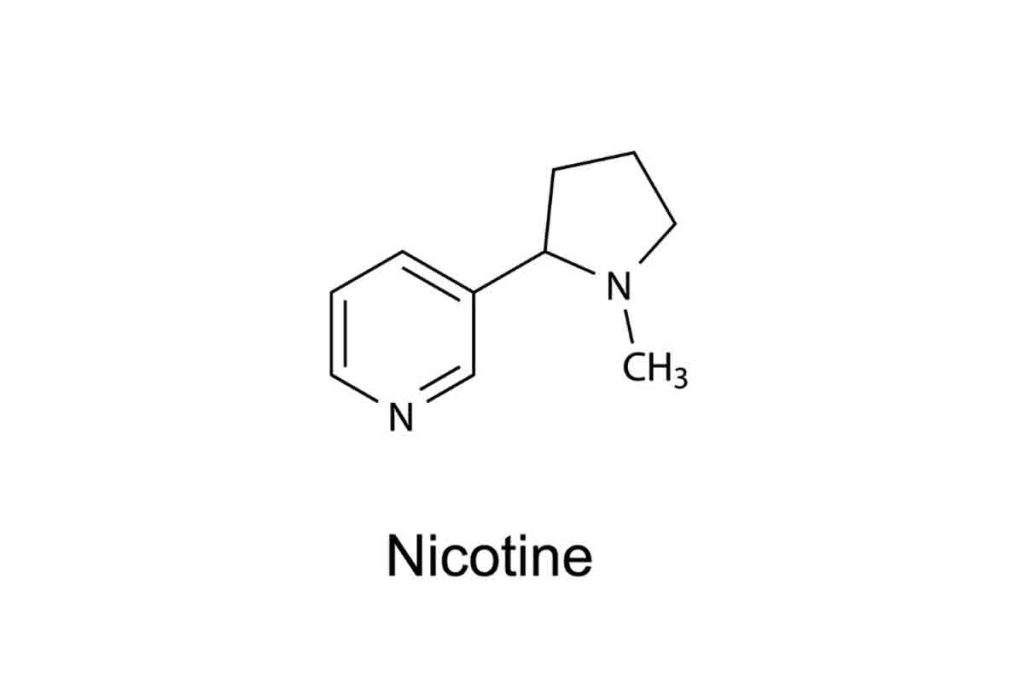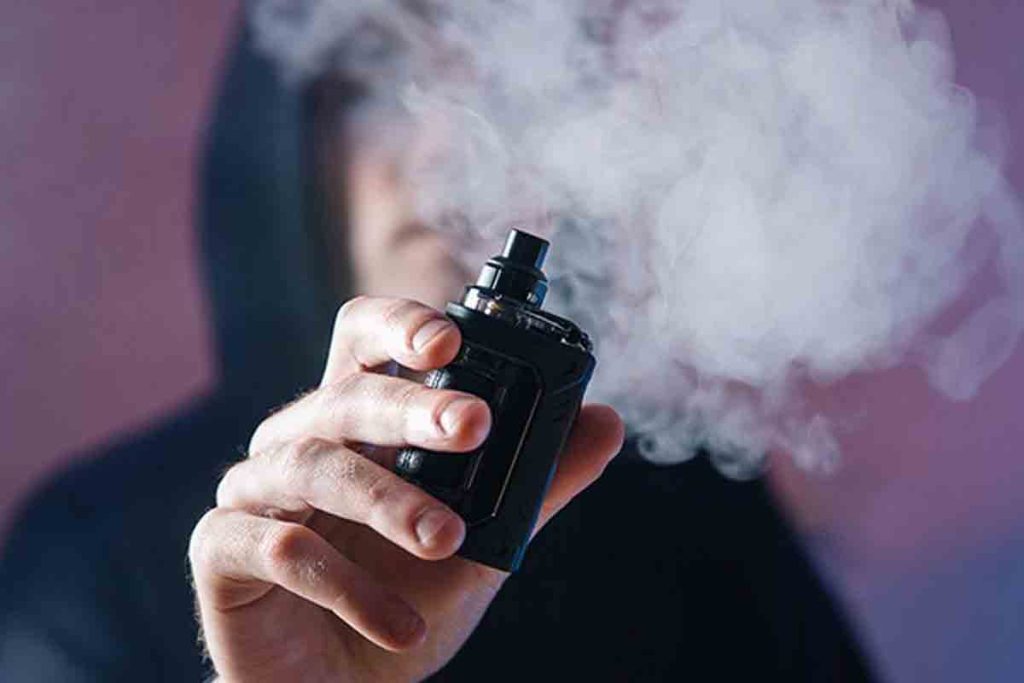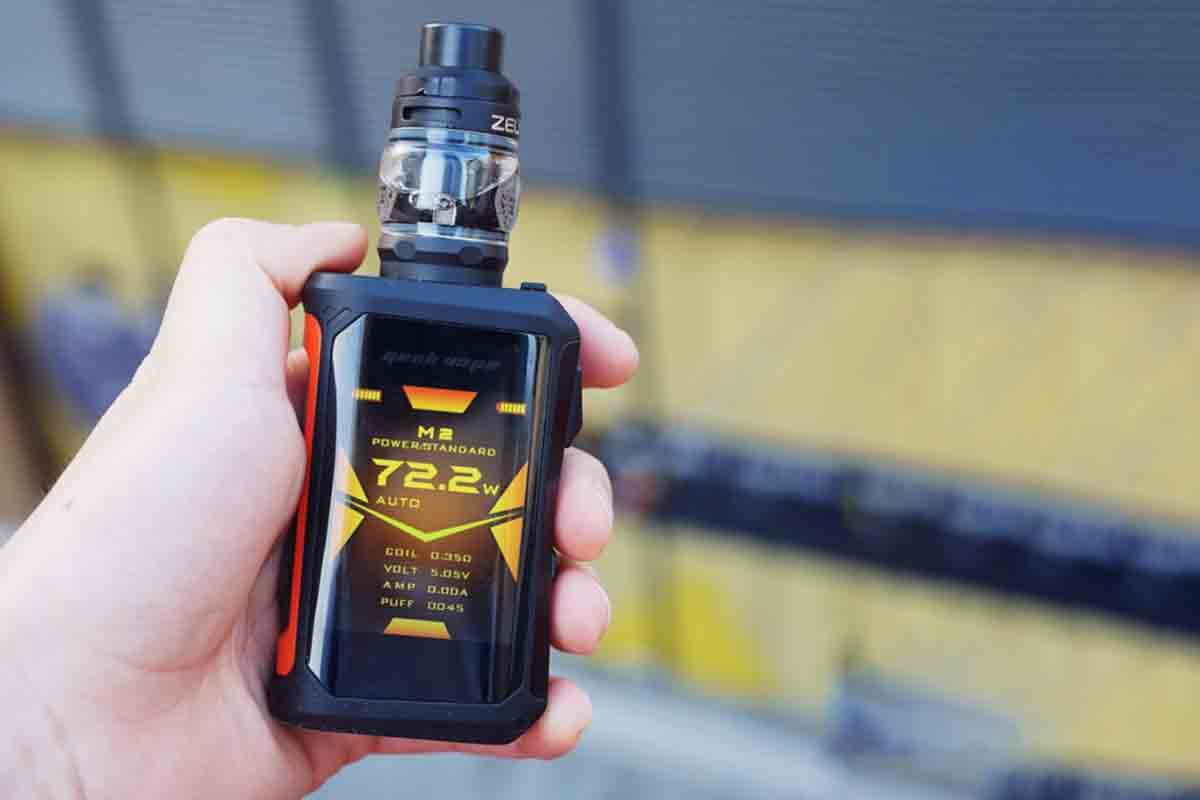How Does Vape Nicotine Compare to Cigarette Nicotine?
Vaping has emerged as a popular alternative to traditional cigarette smoking. As more people switch to e‑cigarettes or use them alongside combustible tobacco, many wonder: How does vape nicotine compare to cigarette nicotine? This article explores the differences and similarities in nicotine content, absorption, and pharmacokinetics between vaping and cigarette smoking. We also examine the health implications and behavioral factors that influence nicotine dependence. By understanding these aspects, readers can make more informed decisions about their nicotine use and tobacco cessation strategies.
Background and Fundamentals
Introduction: How Does Vape Nicotine Compare to Cigarette Nicotine?
Nicotine is the key addictive substance in both traditional cigarettes and e‑cigarettes. However, the method of delivery—and therefore the way nicotine affects the body—differs substantially between these two products. Traditional cigarettes deliver nicotine through the combustion of tobacco, generating smoke laden with thousands of chemicals. In contrast, e‑cigarettes heat a liquid (known as e‑liquid or vape juice) that typically contains nicotine, propylene glycol, glycerin, and flavorings to create an aerosol. These differences have led to a significant public debate over whether vaping offers a safer, less addictive alternative to smoking. In this article, we delve into the specifics of nicotine content, absorption kinetics, and user behaviors to answer the question: How does vape nicotine compare to cigarette nicotine? We will support our discussion with authoritative data from reputable sources such as the CDC, NHS, and peer-reviewed studies on nicotine pharmacokinetics.
Understanding Nicotine: Cigarette Nicotine vs. Vape Nicotine

Nicotine is a naturally occurring alkaloid found in tobacco plants. In traditional cigarettes, nicotine is delivered rapidly through smoke produced by burning tobacco. Although a typical cigarette contains about 10–12 milligrams (mg) of nicotine, only approximately 1–2 mg is actually absorbed into the bloodstream due to losses from combustion and exhalation.
E‑cigarettes, on the other hand, use e‑liquids that are available in a range of nicotine concentrations, usually labeled in milligrams per milliliter (mg/mL) or as a percentage. For example, a 5% nicotine solution typically equates to about 50 mg/mL. Devices such as pod mods often use nicotine salts—a formulation where nicotine is combined with an acid (commonly benzoic acid) to lower pH. This process makes the inhaled aerosol less harsh, enabling users—especially those new to vaping—to inhale higher concentrations of nicotine comfortably. In contrast, many refillable systems use freebase nicotine, which tends to be harsher at high concentrations.
These differences in formulation and delivery mechanisms influence how much nicotine is actually absorbed and how quickly it reaches the bloodstream. Understanding these factors is essential to comparing vape nicotine with cigarette nicotine, as they determine both the subjective experience and the potential for nicotine dependence.
How Much Nicotine Is in a Traditional Cigarette?

Cigarettes are complex products containing not only nicotine but also thousands of other chemicals formed during combustion. On average, a conventional cigarette contains between 10 to 12 mg of nicotine; however, the smoker typically absorbs only about 1–2 mg per cigarette. This reduced absorption is due to the inefficiency of combustion and the loss of nicotine in sidestream smoke and exhalation. Research published by the National Institutes of Health (NIH) and other sources has demonstrated that the actual nicotine intake per cigarette varies with brand and smoking technique.
In addition to brand differences, individual smoking behaviors such as puff volume, puff duration, and frequency also affect nicotine uptake. Cigarette smoke, delivered via combustion, results in rapid absorption of nicotine into the lungs and then into the bloodstream, typically reaching peak plasma levels within minutes. This fast delivery is one reason why cigarettes are highly addictive.
When comparing the nicotine yield, it is useful to note that a pack of 20 cigarettes delivers roughly 22–36 mg of nicotine to the user’s system. These numbers provide a baseline for comparing the nicotine delivery of e‑cigarettes.
How Much Nicotine Is in a Vape? Exploring E‑Liquid and Device Variations

E‑liquids come in a variety of nicotine concentrations, often ranging from 0 mg/mL (nicotine-free) to as high as 50 mg/mL in some markets. In the United Kingdom, regulations typically cap nicotine concentrations at 20 mg/mL for e‑liquids. The label on an e‑liquid bottle may read “5% nicotine,” which is generally equivalent to 50 mg/mL. However, many users find that the experience of vaping is not solely dictated by the nicotine concentration in the liquid.
Several factors influence the actual nicotine delivery from an e‑cigarette:
- Device Type: Disposable e‑cigarettes, pod mods, and refillable tanks vary in their design and power output. For instance, pod mods that use nicotine salts are designed for a smoother inhalation and can deliver high levels of nicotine even at lower power settings.
- Battery Power and Heating Element: Higher wattage devices can vaporize more e‑liquid per puff, potentially increasing the nicotine yield. Conversely, lower-powered devices may deliver less nicotine per puff.
- User Behavior: The number of puffs taken, the length of each puff, and the intensity with which a user inhales all affect the amount of nicotine that is ultimately absorbed.
- Nicotine Formulation: As noted earlier, nicotine salts allow for higher concentrations to be inhaled with less irritation, making them popular in modern pod systems.
For example, studies have shown that an experienced e‑cigarette user using a pod mod with a 5% (50 mg/mL) nicotine salt solution can achieve plasma nicotine levels approaching those seen in traditional cigarette smokers. However, inexperienced users often do not extract as much nicotine, leading to lower blood nicotine concentrations. This discrepancy highlights the role of user experience in nicotine delivery from vaping products.
Understanding these nuances is critical when addressing the question: How does vape nicotine compare to cigarette nicotine? While the raw nicotine content in e‑liquids can be high, the actual systemic exposure depends on device efficiency and user behavior.
Nicotine Absorption and Pharmacokinetics: Vape Versus Cigarette
The pharmacokinetics of nicotine—how it is absorbed, distributed, metabolized, and eliminated—differ markedly between traditional cigarettes and e‑cigarettes. When smoking a cigarette, nicotine is rapidly absorbed through the lungs via combustion, reaching peak plasma concentrations (Cₘₐₓ) within 2–5 minutes. In contrast, vaping typically results in a slower rise in blood nicotine levels, with peak concentrations often achieved in 5–10 minutes. This slower absorption is partly due to differences in aerosol particle size and deposition patterns in the respiratory tract.
Key pharmacokinetic parameters include:
- Cₘₐₓ (Maximum Plasma Concentration): Research has shown that Cₘₐₓ is significantly higher in cigarette smokers compared to users of e‑cigarettes, especially in inexperienced vapers. However, experienced e‑cigarette users can modify their puffing behavior to achieve nicotine levels closer to those of cigarette smokers
- .
- Tₘₐₓ (Time to Maximum Concentration): Cigarettes generally reach Tₘₐₓ faster than e‑cigarettes. This rapid nicotine delivery contributes to the immediate “hit” experienced by smokers.
- AUC (Area Under the Curve): The total nicotine exposure over time (AUC) may be lower for e‑cigarette users, particularly those new to vaping, though experienced users can achieve comparable systemic exposure.
These differences in nicotine absorption and delivery kinetics are crucial for understanding why some smokers find it challenging to switch entirely to vaping. For many, the initial experience with an e‑cigarette does not replicate the rapid and intense nicotine “rush” of a cigarette. However, with adaptation—such as taking longer or deeper puffs—vapers can eventually titrate their nicotine intake to approximate that of smoking. This adaptation is a key factor in determining both satisfaction and the potential for nicotine dependence among e‑cigarette users.
Comparative Analysis, Health Effects, and FAQs
Direct Comparison: How Does Vape Nicotine Compare to Cigarette Nicotine in Delivery?
When comparing nicotine delivery between vaping and smoking, several studies indicate that while the nicotine content of e‑liquids can be high, the actual systemic exposure is generally lower in inexperienced vapers. For instance, one study found that an e‑cigarette using a 5% nicotine salt solution delivered about 54% less nicotine than a traditional cigarette under controlled conditions. However, experienced e‑cigarette users—by adjusting their puff duration and inhalation technique—can achieve plasma nicotine concentrations similar to those of cigarette smokers.
Key differences include:
- Nicotine Yield per Puff: Traditional cigarette puffs are typically more efficient in nicotine delivery due to the combustion process, whereas the vapor produced by e‑cigarettes may contain lower amounts of nicotine per puff.
- User Adaptation: Many vapers initially experience lower nicotine absorption compared to smokers, but with time and experience, they learn to optimize their device settings (e.g., increasing power or altering puffing behavior) to increase nicotine yield.
- Device Efficiency: Advanced devices, particularly variable-power tanks and pod mods using nicotine salts, are designed to deliver higher concentrations of nicotine with less irritation. This means that in some cases, an experienced vaper using a high‑performance device may receive nicotine levels comparable to those from smoking.
A side-by-side comparison shows that while a cigarette may deliver approximately 1–2 mg of nicotine per stick (with rapid absorption), the effective nicotine dose from a single vaping session can vary widely. For example, a 2 mL pod of a 5% nicotine salt e‑liquid might contain up to 100 mg of nicotine, but only a fraction is inhaled and absorbed, with studies reporting systemic exposure levels that are often 30–50% lower than those from smoking a cigarette.
These comparative data illustrate that vape nicotine vs. cigarette nicotine delivery is influenced by device type, user experience, and product formulation. The differences in nicotine pharmacokinetics also help explain why some smokers struggle to fully switch to vaping without adjusting their behavior.
Health Implications: Comparing the Effects of Vape Nicotine Versus Cigarette Nicotine
Both vaping and smoking deliver nicotine—a highly addictive substance—but the associated health risks differ significantly. Traditional cigarette smoke contains a multitude of harmful chemicals, including tar, carbon monoxide, and numerous carcinogens, which contribute to lung cancer, cardiovascular disease, and respiratory disorders. In contrast, e‑cigarette aerosol generally contains fewer toxicants and at lower concentrations.
However, the nicotine itself is not without risk. High levels of nicotine can increase heart rate, blood pressure, and contribute to the development of nicotine dependence. Studies have shown that while e‑cigarettes may reduce exposure to many toxic substances found in cigarette smoke, the slower yet adjustable nicotine delivery can still support dependence. For example, research by the National Academies of Sciences, Engineering, and Medicine reported that e‑cigarettes deliver lower peak and overall nicotine levels compared to smoking, which may translate to a lower risk of dependence—but only when use behavior is optimized.
For users, the health impact depends not only on the nicotine dose but also on the method of delivery. The rapid nicotine “hit” from cigarettes is associated with higher abuse potential, whereas the more gradual absorption from vaping might lead to different patterns of dependence. Nevertheless, experienced vapers can achieve similar systemic nicotine exposure as cigarette smokers, raising concerns about potential cardiovascular and neurological effects over the long term.
While many experts agree that switching from smoking to vaping is likely to reduce overall health risks, it is important to note that vaping is not risk-free. Ongoing research continues to assess the long-term health effects of inhaling aerosolized nicotine and other chemicals present in e‑cigarette vapor.
User Behavior and Nicotine Dependence: Why Vape Nicotine vs. Cigarette Nicotine Matters
User behavior is a key determinant in how much nicotine is absorbed from both cigarettes and e‑cigarettes. With traditional cigarettes, the combustion process delivers nicotine rapidly, and users tend to develop habitual puffing patterns that reinforce dependence. In contrast, many new vapers initially take shorter, less intense puffs, resulting in lower nicotine uptake. Over time, as users adapt to their devices, they may take longer and deeper puffs to reach the desired nicotine levels—sometimes achieving nicotine concentrations comparable to those of cigarette smokers.
This self‑titration behavior can affect dependence. While vaping is often touted as a less harmful alternative to smoking, the ability to adjust puffing behavior and device settings means that experienced vapers can eventually match the nicotine exposure of traditional cigarettes. Consequently, even though the toxicant exposure may be lower, the addictive potential of nicotine remains a significant concern.
Understanding how vape nicotine compares to cigarette nicotine is crucial for both public health messaging and for individuals attempting to quit smoking. It underscores the importance of monitoring usage patterns and considering behavioral interventions alongside device and product selection.
FAQs: How Does Vape Nicotine Compare to Cigarette Nicotine?
Q1: Does vaping deliver as much nicotine as smoking a cigarette?
A1: Not initially. Inexperienced vapers often absorb less nicotine per puff than cigarette smokers. However, with experience and behavioral adjustments, users can achieve comparable systemic nicotine levels.
Q2: How are nicotine levels measured in vapes compared to cigarettes?
A2: Cigarette nicotine is typically measured in milligrams per cigarette, while e‑liquids are labeled in mg/mL or as a percentage (e.g., 5% equals approximately 50 mg/mL). Device efficiency and user technique also affect absorption.
Q3: Can vaping be as addictive as smoking?
A3: Yes. While e‑cigarettes may deliver fewer toxicants, experienced users can modify their puffing habits to absorb similar amounts of nicotine as cigarettes, thereby supporting nicotine dependence.
Q4: What factors influence nicotine delivery in e‑cigarettes?
A4: Device type, battery power, coil resistance, puff duration, and whether the liquid uses nicotine salts or freebase nicotine.
Q5: Is the nicotine absorption rate the same for both products?
A5: No. Cigarettes deliver nicotine rapidly via combustion, while vaping results in a slower absorption, although this difference can diminish with user adaptation.
Conclusion: Summing Up How Vape Nicotine Compares to Cigarette Nicotine
In summary, while traditional cigarettes and e‑cigarettes both deliver nicotine, they do so via very different mechanisms. Cigarettes provide a rapid, intense nicotine hit through combustion, whereas vaping delivers nicotine more gradually through aerosolized e‑liquid. Although inexperienced vapers may initially absorb less nicotine, experienced users can adjust their behavior to achieve levels similar to cigarette smokers. Despite the lower toxicant profile of e‑cigarettes, the potential for nicotine dependence remains significant. Understanding these differences is essential for making informed decisions about smoking cessation and harm reduction.









[…] between vaping and smoking. This comparison helps answer common questions such as “How does vape nicotine compare to cigarette […]
[…] compare the amount of nicotine in a disposable vape pen with a cigarette, you need to consider the average nicotine content and the bioavailability of […]
[…] up a liquid, which may contain nicotine, flavoring, and other chemicals, and turn it into vapor. Vaping has some advantages and disadvantages compared to smoking cigarettes, which are the most common form of tobacco use. Here are some of the pros and cons of […]
I used to smoke cigarettes, but now I use vape, and for me there is not much difference between the two.